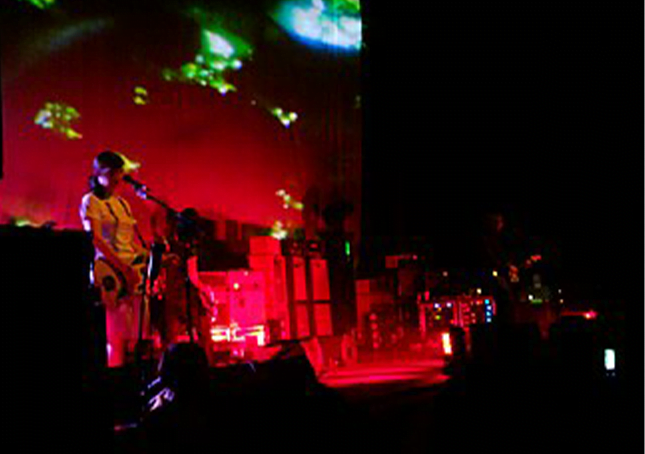Shoegaze

Shoegaze (originally termed shoegazing and sometimes conflated with “dream pop”) is a subgenre of indie and alternative rock characterized by its ethereal mixture of obscured vocals, guitar distortion and effects, feedback, and overwhelming volume.
It emerged in the United Kingdom in the late 1980s among neo-psychedelic groups who stood motionless during live performances in a detached, non-confrontational state with their heads down. This was because the heavy use of effects pedals meant the performers were often looking down at their pedals during concerts.
My Bloody Valentine’s album Loveless (1991) is often seen as the genre’s defining release, with other prominent shoegaze groups including Slowdive, Ride, Lush, the Boo Radleys, and Chapterhouse.
A loose label given to the shoegaze bands and other affiliated bands in London in the early 1990s was “the Scene That Celebrates Itself”.
Most shoegaze artists drew from the template set by My Bloody Valentine on their late 1980s recordings, as well as bands such as Dinosaur Jr., the Jesus & Mary Chain, and the Cocteau Twins. The genre has often been used interchangeably with dream pop, but shoegaze may be distinguished by a harsher, louder and more distorted sound.
In the early 1990s, shoegaze was pushed aside by the American grunge movement and early Britpop acts, forcing the relatively unknown bands to break up or reinvent their style altogether.[1] In the 2000s, there was renewed interest in the genre among “Nu gaze” bands.
